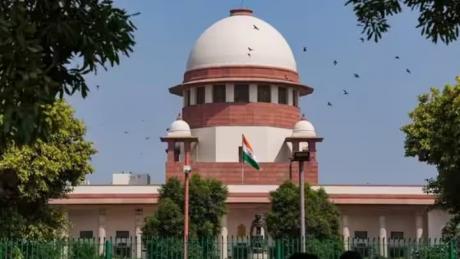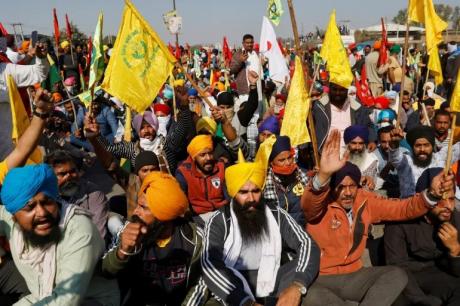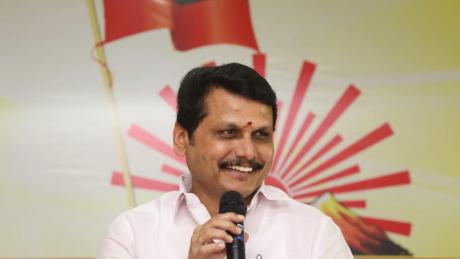After issuing the fresh order of extending the nationwide lockdown till May 17 amid the swirling speculations, the Central government has, on Friday, rolled out the new set of guidelines on how the nation should pedal through the extended spell of the lockdown as the country has been reeling to curb the spread of the Coronavirus pandemic.
According to the announcement, the order of the lockdown extension would come into effect on May 4, as the renewal of the current deadline of May 3 and it would stay in place till May 17. The Center has listed out the guidelines of what would be functioning and what not in Red, Orange, and Green Zones across the country to ensure that the grip against the fight won't get loosened. We are listing out the services permitted/prohibited till May 17,
The activities that are restricted throughout the country, irrespective of the zones:
- The transportation channels - including air, rail, metro, and inter-state movements by road, would remain suspended across the nation, and it's applicable for every zone.
- Hospitality services including hotels, restaurants, and recreational centers would be closed till May 17.
- Schools, colleges, and other educational, training, and coaching institutions are barred from resuming the operations.
- Places of large public gatherings such as malls, cinema halls, gymnasiums, social, political, cultural, and religious gatherings and places of worship shall be closed.
- Movement of people for all non-essential services would be strictly restricted between 7 pm and 7 am during the lockdown days.
- People above 65 years of age, people with co-morbid conditions, children below the age of 10, and pregnant women living in all zones should stay at home with having exemptions for hopping out their homes for the essential purposes and requirements.
The following services are allowed across the country:
- People would be permitted to move by air, rail, and road transports for selected and essential purposes and for the services allowed by the Union Ministry of Home Affairs.
- The movement of goods, cargo, and freight would be permitted across the country to ensure that the essentials are supplied uninterruptedly.
- Out-patient departments and medical clinics would be permitted across all the zones apart from the containment zones. These operations should affirm that they adhere to the social distancing norms and other safety precautions.
Activities permitted and prohibited in Red zones:
- According to the Union government's recent identification, the country has 130 districts under Red zones which are hotspots for the virus spread and these zones would see some additional services restricted along with the nationwide prohibition.
- The Red zones would prohibit the operations of cycle and auto-rickshaws, taxis and cab services, barbershops, spas, and saloons, and the transportation between inter and outer districts including the movements by road.
- The movements of individuals and vehicles would be permitted for essential activities with a maximum of two persons apart from the driver in four-wheeler vehicles and no pillion rider would be allowed for two-wheelers.
- Industrial establishments in urban areas including Special Economic Zones (SEZs), Export Oriented Units (EOUs), Industrial estates, and industrial townships with access control would be permitted to function.
- Private companies in the red zones can resume the operations with 33% of the in-office manpower while the remaining employees are permitted to work from home.
- Shops in urban areas for non-essential trades haven't been permitted in malls, markets, and market complexes, and all the standalone shops, shops in the residential complexes, shops in neighborhoods are permitted to open in urban areas, regardless of essential and non-essential.
- E-commerce activities are permitted only for essential goods. All the agricultural activities would be permitted in the red zones so are the animal husbandry, inland, and marine fisheries, and all plantation activities.
- Most of the commercial and private establishments have been allowed in the red zones and these include electronic, print media, IT and its enabled services, data and call centers, private security and facility management services, cold storage, and warehousing services.
- The operations and manufacturing of essential goods such as medical devices, drugs, and pharmaceuticals, production units with the continuous process and the supply chain would be allowed to function in the red zones.
Living in Orange Zones, here's the update for you:
- According to the center's identification, India has 284 districts that have been marked as orange zones with reporting a sharp rise in the number of cases and along with the services permitted in the red zones, taxi and cab services would be permitted in orange zones with one driver and one passenger in a ride.
- Orange zones have been poured with some restrictions in transports. Inter-district movements of vehicles and individuals would be allowed for permitted and essential activities and four-wheelers can have a maximum of two passengers apart from the driver and pillion riding will be allowed on two-wheelers.
Activities that are allowed in Green zones:
- India currently has 319 districts under Green zones, according to the Union Health Ministry.
- Except for the services that are prohibited nationwide, all activities would be permitted in green zones, which have a low rate of infection while comparing to the orange and red zones.
- The movements of individuals by road shall be allowed in green zones and the buses can operate with 50 percent of seating capacity and the respective bus depots can resume only 50 percent of the operations.
- Liquor, paan, and tobacco shops would be allowed to resume the operations in green zones from May 4 with certain restrictions. The shops should ensure that the customers maintain a minimum of six-feet social distancing and not more than five persons are allowed at one time at the shops.
India has been under complete lockdown since March 24 and the current extension is the second one by the Central government amid the surging cases for the virus. The government has given the first extension of the lockdown on April 14 which would end by Sunday- May 3, 2020, after which the second extension would come into effect as the country has been aiming to flatten the curve of COVID-19 affected cases. India has reported 37336 cases for the virus so far as of Saturday morning of which 9951 have been recovered and 1218 have succumbed to the virus.
You can visit the guidelines issued by the Ministry of Home Affairs by clicking this link, https://www.mha.gov.in/sites/default/files/MHA%20Order%20Dt.%201.5.2020%20to%20extend%20Lockdown%20period%20for%202%20weeks%20w.e.f.%204.5.2020%20with%20new%20guidelines.pdf









Comments